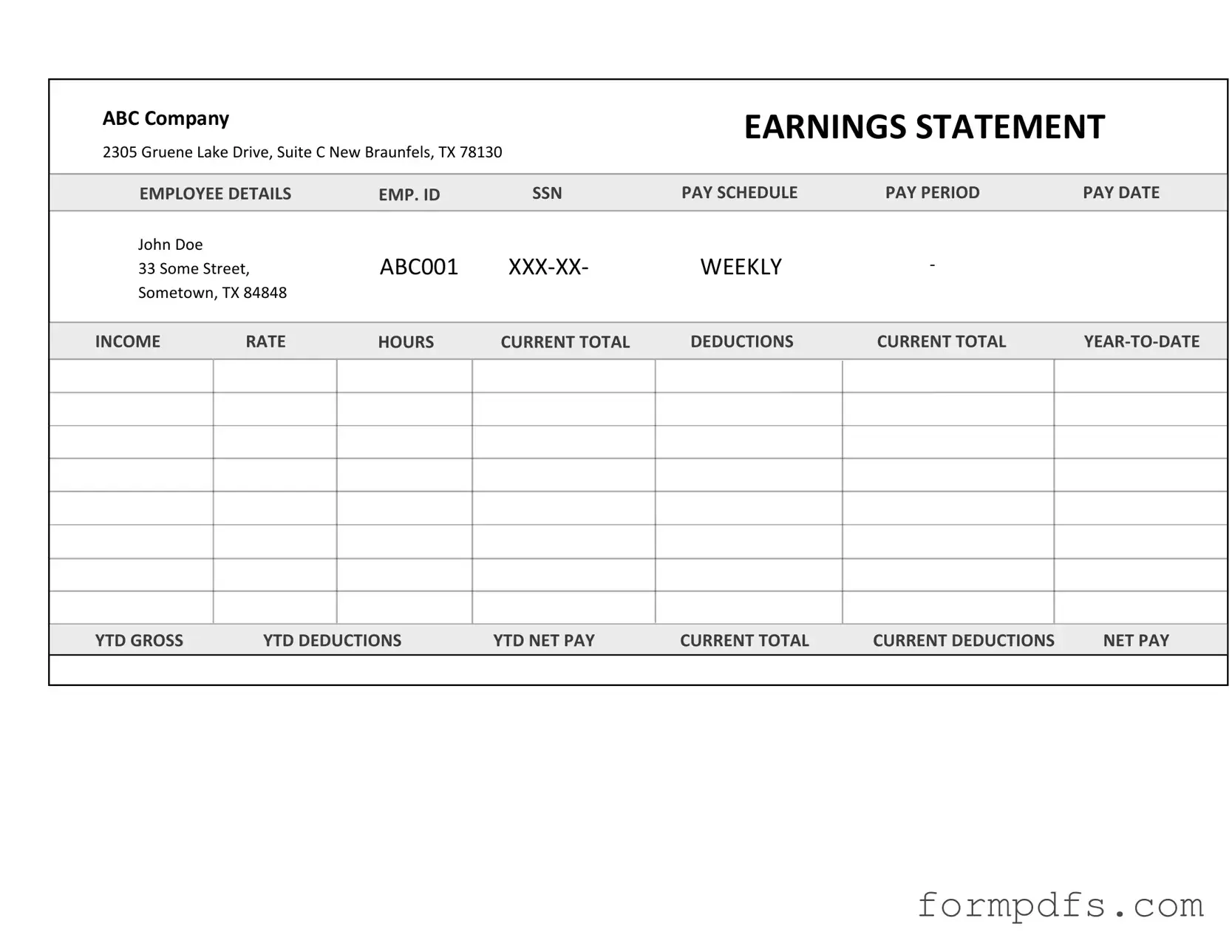What is an Independent Contractor Pay Stub?
An Independent Contractor Pay Stub is a document that outlines the earnings and deductions for an independent contractor during a specific pay period. It serves as a record of payment and can be used for tax purposes, providing transparency in financial transactions between the contractor and the hiring entity.
Who needs to use an Independent Contractor Pay Stub?
This form is essential for independent contractors who provide services to clients or companies. It helps ensure that both parties have a clear understanding of the payment details, which is crucial for tax reporting and financial management.
What information is typically included in the pay stub?
A standard Independent Contractor Pay Stub includes the contractor's name, address, and tax identification number. It also lists the pay period, total earnings, any deductions (if applicable), and the net amount paid. Additional details, such as the nature of the services rendered, may also be included.
How can I obtain an Independent Contractor Pay Stub?
Why is it important to keep a copy of the pay stub?
Keeping a copy of the pay stub is vital for record-keeping and tax purposes. It helps independent contractors track their income and expenses, ensuring accurate tax filings. Additionally, it can serve as proof of income when applying for loans or other financial services.
Are there any legal requirements for issuing a pay stub?
While there may not be federal laws mandating pay stubs for independent contractors, some states have specific regulations regarding payment documentation. It is advisable to check local laws to ensure compliance and avoid potential legal issues.
Can deductions be included on the pay stub?
Yes, deductions can be included on the pay stub. This may encompass taxes withheld, insurance premiums, or any other agreed-upon deductions. However, many independent contractors operate as self-employed individuals and may not have taxes withheld, which should be clearly stated on the pay stub.
How often should independent contractors issue pay stubs?
The frequency of issuing pay stubs can vary based on the terms of the contract. Some contractors may provide pay stubs after each payment, while others may do so on a monthly or bi-weekly basis. Consistency is key to maintaining clear financial records.
What should I do if I find an error on my pay stub?
If an error is found on a pay stub, it is important to address it promptly. Contact the client or company that issued the pay stub to discuss the discrepancy. Corrections should be made as soon as possible to ensure accurate financial records and tax reporting.
Can I use a pay stub as proof of income?
Yes, an Independent Contractor Pay Stub can serve as proof of income. It provides a documented history of earnings, which can be useful for loan applications, rental agreements, or any situation requiring verification of income. Ensure that the pay stub is clear and detailed for best results.
